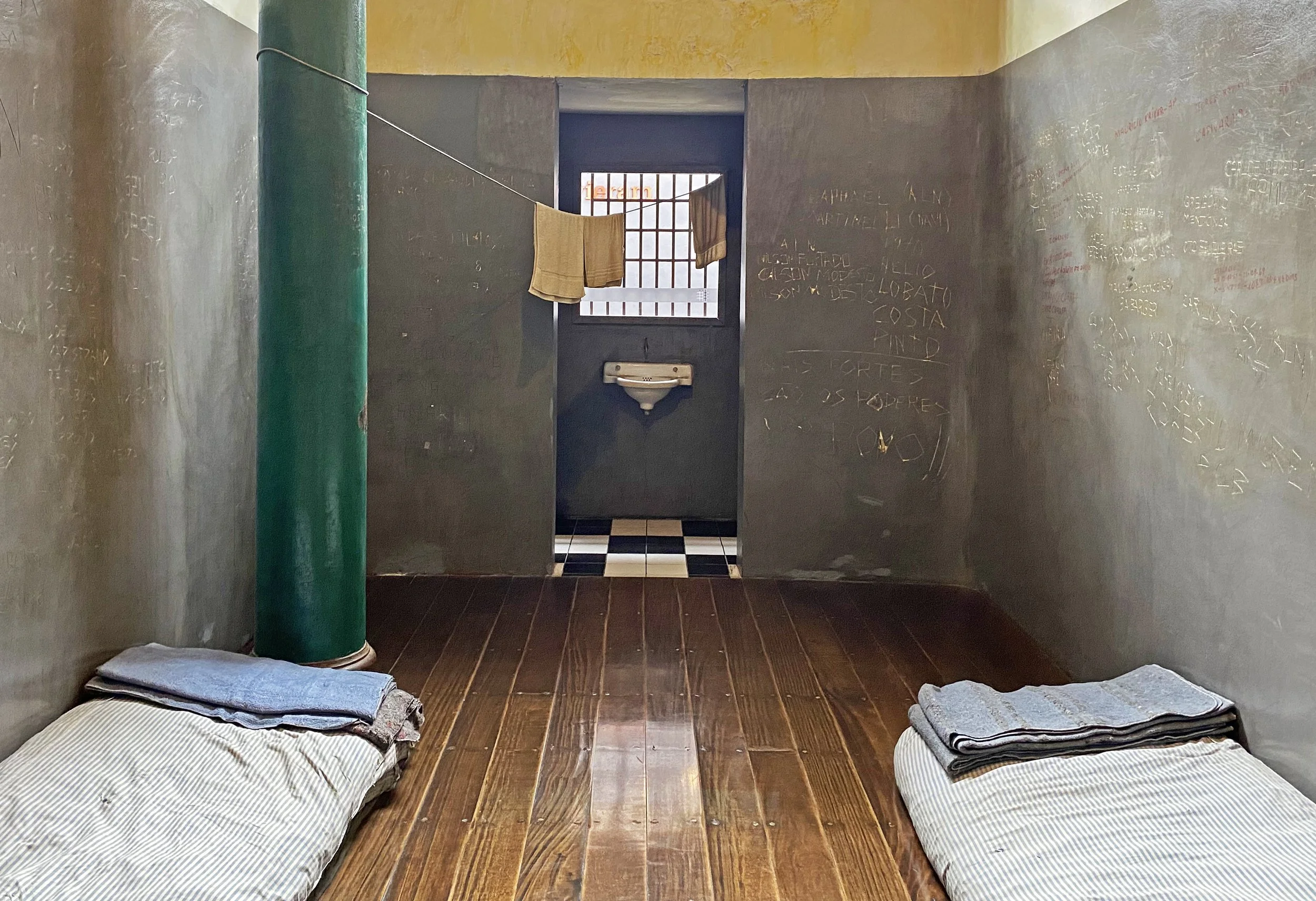The Banality of Evil Revisited
Prison cell, Departamento Estadual de Ordem Politica e Social in São Paulo
The machinery of internal repression demands an army of willing public servants and an architecture to match. Prisons, camps, and cells are prerequisites but the widespread organisation of state terror requires colossal amounts of paperwork, filing cabinets and offices. The most disturbing aspect of the former Stasi prison, now the Berlin-Hohenschönhausen Memorial, is not the basement padded cells and rubber lined water torture chamber, but the three floors of identical offices each of which contains a formica table, two chairs, a lamp and a portrait of Dzerzhinsky, Polish founder of the KGB. At any one-time hundreds of prisoners could be interrogated simultaneously, a perfect example of what Hannah Arendt meant by the banality of evil, in which the ritual humiliation and torture of citizens was transformed into an administrative exercise. It is estimated that if lined up, the Stasi files would stretch for four kilometres. The headquarters of DEOPS, Departamento Estadual de Ordem Politica e Social in São Paulo, the home of the Brasilian secret police, is a similarly unsettling place. Housed in an imposing three-story former train station, it is now the Memorial da Resistencia, opened in 2008. DEOPS was no ordinary police organisation. Recruits were required to undergo ideological training to ensure their unswerving loyalty to the military dictatorship. Dedicated to terrorising political opponents of the regime, they targeted students, trade unions, workers’ organisations and any other social movement considered transgressive or an affront to moral and social order. The former Trade Union leader and current president, Lula, was once an inmate. With the end of the dictatorship many records vanished, particularly those pertaining to the huge network of informants. However, the general archive survived and in what is a macabre monument to bureaucratic efficiency, contains over a million files, including 235,000 detailing arrests and interrogations. The building now functions as a museum and research centre where the families of victims can access information about one of the most brutal periods of Brasilian history. The photograph above shows one of the cells in which up to twenty prisoners were held, its walls covered with scratched names and messages of resistance. Although a little like a stage set, it is nevertheless a solemn place to sit and contemplate the evidence of torture and political assassination, grisly events that the political right still either deny or maintain was a legitimate response to the threat of Communism.
